pectus excavatum baby causes
It occurs mostly in boys and frequently more members in a family are affected. Some children with pectus excavatum also have other medical conditions or bone abnormalities.

Pectus Excavatum And Improve Your Homoeopathic Knowledge Facebook
They may have an Edwards syndrome a genetic condition caused by all or part of an extra copy of chromosome 18.

. Pectus excavatum occurs in a baby who is developing in the womb. The condition can be mild or severe. Sometimes the deformity isnt noticeable until after the adolescent growth spurt.
Causes of Pectus Excavatum While the cause of this abnormality is unknown the fact that it tends to occur in families suggests that genetics may play a role. Down syndrome causes the presence of all or part of an extra copy of chromosome 21. It is very common for children with pectus carinatum to have another health problem.
Pectus excavatum affects about one in 1000 children and is four times as common in boys as in girls. Estimates vary but pectus excavatum or funnel chest is thought to occur in one of every 600 to 2000 newborns. Although the majority of cases dont involve a family history there are many that do enough to warrant suspicion that genes may play a significant role.
This causes a depression of the sternum and the chest has a sunken in or funnel chest appearance. Pectus excavatum a deformity of the sternum and ribs caused by an unbalanced costochondral hypertrophy is a congenital abnormality with a prevalence of 1 per 1000 patients. Both or just one side of the breastbone may be affected.
Some studies investigating a genetic component are underway. For most children and teens the main issue with pectus carinatum is the way it. Pectus Excavatum in Babies.
What causes pectus excavatum. The exact cause of sunken chest or pectus excavatum is yet to be discovered but several scientific approaches reveal that it usually occurs due to a developmental issue during pregnancy. Pectus excavatum is caused by the abnormal growth in the chest of the connective tissues cartilage that attach the breastbone sternum to the ribs.
It is caused when several ribs and the sternum grow abnormally which produces a caved-in or sunken appearance of the chest. Excessive growth and structural abnormalities of the cartilage tough connective tissue of the ribs and breastbone are present in pectus excavatum. What is pectus excavatum.
The chest wall is made up of bones as well as muscle and other tissue. 1 2 Pectus excavatum may be associated with connective tissue disorders such as Marfan and. The cartilage pushes the breastbone sternum inward.
It surrounds and protects the heart and lungs. Pectus excavatum PEK-tus eks-kuh-VAY-tum is a deformity of the chest wall that causes several ribs and the breastbone sternum to grow abnormally giving the chest a concave or caved-in appearance. Pectus excavatum is usually congenital present at birth and can get worse.
Pectus excavatum is due to too much growth of the connective tissue that joins the ribs to the breastbone. There is no known cause for pectus excavatum. Pectus excavatum is a congenital chest wall deformity that is caused by growth abnormality of the cartilage that connects the ribs to the breastbone sternum.
Pectus excavatum PECK-tuss ex-kuh-VAW-tum is a condition that causes a childs chest to look sunken or caved in It happens because of a defect in the tough connective tissue cartilage that holds the bony part of the ribs to the breastbone. It can also develop in a baby after birth. Pectus excavatum sometimes called cobblers chest sunken chest or funnel chest is the most common chest deformity affecting between 1 in 300 and 1 in 500 adolescents.
Asymmetrical shapes of the deformity are. We are not sure what causes ribcage problems but it seems to be linked to the cartilage in the ribcage overgrowing. The condition is also called sunken chest or funnel chest.
It is caused by an overgrowth of cartilage between the sternum and the ribs which. Pectus excavatum is believed to result from an abnormal growth of rib cartilage that causes the sternum breastbone to be pulled inward resulting in a depression in the chest. For this reason pectus excavatum is also known as sunken chest or funnel chest.
Pectus carinatum is an uncommon birth defect in which a childs breastbone protrudes outward abnormally. The condition affects more boys than girls. Around 35 days into the gestation period the.
This causes a depression in the chest that can range from mild to severe. The deformity can result in increased pressure on the heart and lungs during the growing period. Recent studies revealed that pectus excavatum in babies may be genetic.
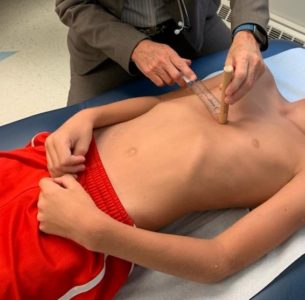
Should I Worry If My Child S Chest Is Sunken Cincinnati Children S Blog

Patient 2 Note Cafe Au Lait Spots Pectus Excavatum Widespaced Download Scientific Diagram

Pectus Excavatum Chest Wall Deformities Child Heart Specialist
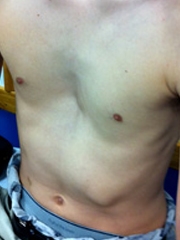
Pectus Excavatum Children S Hospital Of Philadelphia
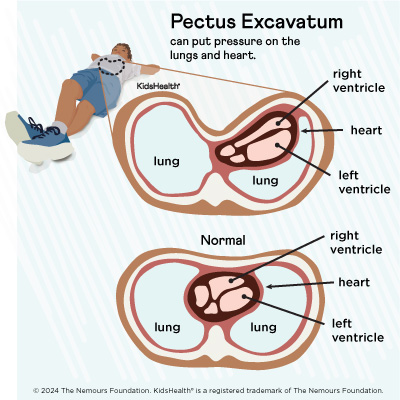
Chest Wall Disorder Pectus Excavatum For Parents Norton Children S
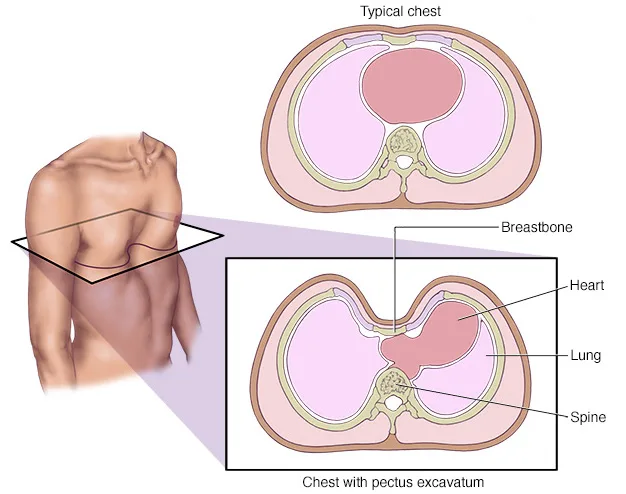
Pectus Excavatum Chest Wall Deformities Child Heart Specialist

Pectus Excavatum Funnel Chest Asthma Lung Uk
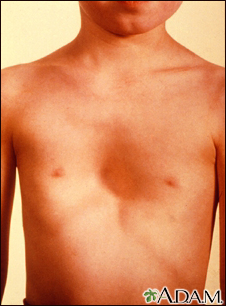
Pectus Excavatum Information Mount Sinai New York
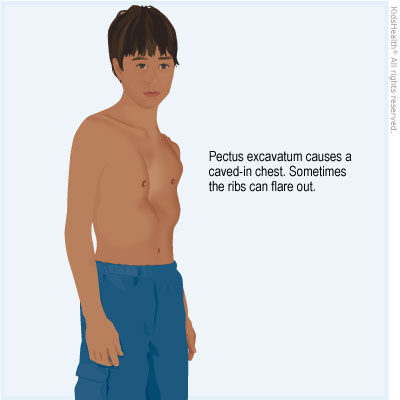
Chest Wall Disorder Pectus Excavatum For Parents Primary Children S Hospital

Strength Training With Pectus Excavatum Wasserman Strength
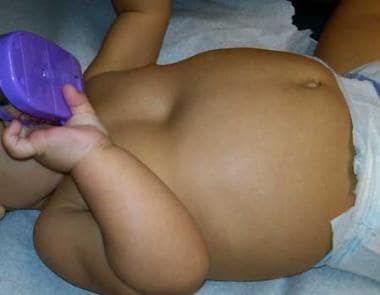
Nuss Procedure For Pectus Excavatum Background Indications Contraindications

Pdf Prenatal Diagnosis Of Pectus Excavatum
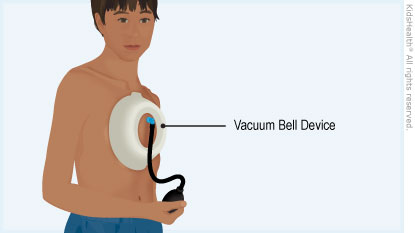
Kidshealth Pectus Excavatum Vacuum Bell Device Akron Children S Hospital

Pectus Excavatum From A Pediatric Surgeon S Perspective Abstract Europe Pmc

Pectus Excavatum Symptoms Treatments And Complications

Full Shot And Limbs At The Age Of 9 Years A Evidence Of Pectus Download Scientific Diagram

Help My Baby S Chest Is Caving In Pectus Excavatum Dr Paul Youtube

